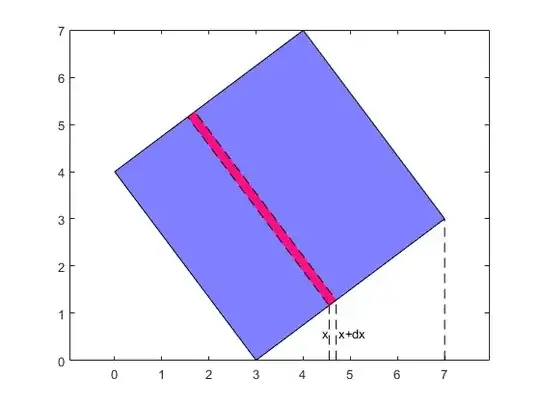There seem to be three issues here. The first is the integral you so wrongly attempted: by proportion,
$$\frac rR=\frac hH$$
So
$$r=\frac RHh$$
and
$$dr=\frac RHdh$$
Then
$$\bar S=\int_0^R2\pi r\,dr=\int_0^H2\pi\frac RHh\cdot\frac RHdh=\pi R^2$$
so the situation is even worse! Now there's the issue about integrating lengths to get an area like integrating areas to get a length. You can't always do these things. Let me give an illustration:

Now, in figure 1 we would like the area of the blue sector of an annulus from $r=R_1$ to $r=R_2$ and from $\theta=\theta_1$ to $\theta=\theta_2$. So I start with a line from $(x,y)=(R_1\cos\theta,R_1\sin\theta)$ to $(x,y)=(R_2\cos\theta,R_2\sin\theta)$ and want to add up the red area between that line and the line from $(x,y)=(R_1\cos(\theta+d\theta),R_1\sin(\theta+d\theta))$ to $(x,y)=(R_2\cos(\theta+d\theta),R_2\sin(\theta+d\theta))$.
Now, one might think that one should multiply the length of the first line by the width of the red area and add up over all potential red areas, but there is a problem in that the red area doesn't have uniform width. So in practice you would have to find the average width and multiply by that. The same issue arises in adding up areas to get volumes, but you have only been exposed thus far to problems where the width of the zone between the areas is uniform.
The last issue is that even when the width of the areas is uniform you have to compute that width from the variable of integration when setting up the integral. Another illustration:

In figure 2, we want to compute the area of the blue square with corners at $(3,0)$, $(7,3)$, $(4,7)$, and $(0,4)$. So we'll start from $x=3$ up to $x=7$ and draw lines from the $x$-axis at $(x,0)$ and $(x+dx,0)$ up to the square and the draw a red rectangle from where these lines meet the square. The length of the red rectangle is a side of the square, $5$. But the width $dw$ is not $dx$. From similar triangles we could show that
$$\frac{dw}5=\frac{dx}4$$ so $$dw=\frac54dx$$
Now we can find the area of the blue square:
$$A=\int h\,dw=\int_3^75\cdot\frac54dx=\left.\frac{25}4x\right|_3^7=25$$
Back the the area of a cone: the distance between a circumference at $(r,h)$ and $(r+dr,h+dh)$ is not $dr$ but
$$ds=\sqrt{(dr)^2+(dh)^2}=\sqrt{1+\left(\frac HR\right)^2}dr$$
So you need
$$A=\int2\pi r\,ds=\int_0^R2\pi r\sqrt{1+\left(\frac HR\right)^2}dr=\pi R\sqrt{R^2+H^2}$$

